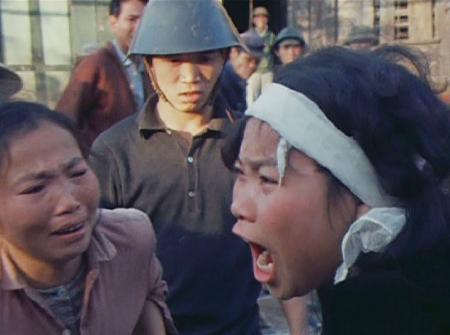Vietnam War: Images of a Devastated Land – Scars on the Landscape and the Soul
The Vietnam War, a conflict that raged from the 1950s to 1975, left an indelible mark not just on the people involved but also on the very landscape of Vietnam. Beyond the human cost – the staggering loss of life and the enduring trauma – the war inflicted devastating physical damage, leaving behind a legacy of environmental destruction and societal upheaval visible even today. This article explores the lasting impact of the war through the lens of powerful imagery, examining the visual record of a nation scarred.
The Photographic Testimony: Witnessing the Devastation
Images from the Vietnam War offer a stark and unflinching portrayal of the conflict's brutality. Photojournalists, both embedded and independent, captured scenes of widespread destruction:
- Napalm attacks: The horrific burns inflicted by napalm, a jellied gasoline incendiary weapon, are indelibly etched in photographic history. Images depicting civilians, often children, suffering from these attacks remain powerful symbols of the war's inhumanity. These images played a crucial role in swaying public opinion against the war in the United States and beyond.
- Agent Orange's legacy: The use of Agent Orange, a highly toxic herbicide, resulted in widespread defoliation, leaving behind a landscape stripped bare and poisoned. Photographs showcasing the desolate, barren forests stand as grim reminders of the lasting environmental consequences. The long-term effects on human health, including birth defects and cancers, are also vividly documented.
- Bombing campaigns: The relentless bombing campaigns, particularly the widespread use of B-52 bombers, resulted in the destruction of entire villages and cities. Aerial photographs illustrate the scale of the devastation, showing craters pockmarking the landscape and buildings reduced to rubble.
- The human cost: Beyond the physical destruction, photographers also captured the emotional toll of the war. Images depicting the grief and suffering of Vietnamese civilians, alongside the weariness and trauma experienced by soldiers on both sides, provide a poignant human element to the narrative of devastation.
Beyond the Battlefield: The Lasting Environmental Impact
The environmental consequences of the Vietnam War continue to resonate decades later. The widespread use of Agent Orange has led to:
- Soil contamination: The lingering effects of Agent Orange continue to poison the soil, impacting agriculture and impacting public health.
- Deforestation: The extensive defoliation programs resulted in significant habitat loss and biodiversity reduction, effects that are still being felt today.
- Water pollution: The use of chemical weapons contaminated water sources, leading to ongoing health concerns for communities in affected areas.
Reframing the Narrative: Memory, Remembrance, and Healing
The images of a devastated Vietnam serve as a powerful reminder of the human cost of war. These photographs are not simply historical records; they are vital tools for understanding the long-term consequences of conflict and for promoting peace and reconciliation. Many museums and online archives offer collections of these images, providing opportunities for reflection and learning.
Understanding the context: Resources for further research:
- The National Archives: A vast collection of photographs and documents relating to the Vietnam War.
- The Library of Congress: Another significant repository of historical materials related to the conflict.
- Vietnam War Memorial: A powerful memorial in Washington D.C. dedicated to those who served and died in the war.
The visual record of the Vietnam War offers a powerful and unsettling testament to the devastating consequences of conflict. By studying these images and understanding their context, we can gain a deeper appreciation of the war's lasting impact and work towards preventing future atrocities. Let us use this visual history to promote peace and understanding.
